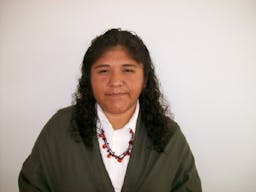Towards an Inclusive Plurinational Assembly
Jan 21, 2015
Story
September 7th. is the death line established by Bolivian National Elections Court to present the list of candidates for the next elections on December 6th. Approved last January 25th, 2009 by a majority of votes a new State Political Constitution provides the norms that step by step are being applied. One of this, is the first Plurinational Legislative Assembly whose members will be elected on December.
As never before, this document establishes equivalent conditions for men and women. During a discourse, the Bolivian President Evo Morales Ayma, pointed out and urged to political parties to include in their lists female participation. He said that candidates should be 50% women and 50% men. Although, there is some indigenous and non indigenous female participation at Parliament it is not in accordance with the population. Last 2001census shows that a bit more than half of the bolivian population is female.
Taking into consideration the Constitution, the biggest indigenous female organization in Bolivia is preparing for coming elections. Bartolina Sisa Confederation, groups indigenous women in all Bolivia. It owes its name to the indigenous female leader, Bartolina Sisa, who together with her husband, Tupak Katari, leaded the indigenous rebellions against the abuses of Spaniadars between 1781 and 1782.
Born around 1750, Sisa characterized by her courage, strenght and decision. On September 5th, 1782 by order of Spaniadars she was hanged on the main square called Plaza Mayor, in La Paz. In honor to her, each September 5th. is remembered as the International Day of Indigenous women. Now, Bartolina Sisa organization, has an important role in the nomination of their representatives who will be participating as candidates for the Plurinational Assembly. According to one of its main leaders, Jimena Leonardo, “Now Constitution gives us the same level of participation as men and it is a pride that we can be taken into account”.
Until the 1950´s decade, women had neither the right to vote nor the right to be elected. Female participation was expressed neither in the first Constitution nor in other ones. Probably due to that, for years and years, men dominated the Bolivian political sphere. This week, Ana María Romero was invited by President Morales to be the candidate as first Senator for La Paz. Romero is a well known journalist and an activist for human rights. For its part, Muspa political party nominated to Ana Maria Flores as candidate to President. Up to know, she is the only female presidential candidate.
As the first time in the Bolivian history, Constitution open doors for equal participation. From what has been known, indigenous organizations are including women and men in their lists. It is really important that indigenous and non indigenous women take part actively in this process. In the last national election in 2005 women had only a 30% participation quota, but now this percentage has increased. Female organizations for long time claimed for the right to be taken into account for elective posts. The only thing, women have to do now is to take what the law says.
Other biggest indigenous organization of low lands, Cidob, is also preparing its list for the next election. Considering the principles of alternancy and parity they postulate for Santa Cruz to Bienvenido Sacu from Guarayu indigenous people and Teresa Nominé from the Ayoreo nation. For Tarija they postulate to an indigenous Weenayek man and a woman from Guaraní indigenous people. In addition, members from Yuracaré and Yuki nations are included too. Indigenous peoples represent 63% of the country´s population and it is expected that this percentage could be reflected in the Plurinational Assembly.
These days, the political panorama in Bolivia offers a lot of surprises. However, two options are opened: one, that means a return to the old politicians model or the other, which in accordance with a process of change, opens participation for all the citizens and offers opportunities for both, majorities and minorities. Now, decision is in our hands.
This article is part of a writing assignment for Voices of Our Future, which is providing rigorous web 2.0 and new media training for 31 emerging women leaders. We are speaking out for social change from some of the most forgotten corners of the world. Meet Us.




